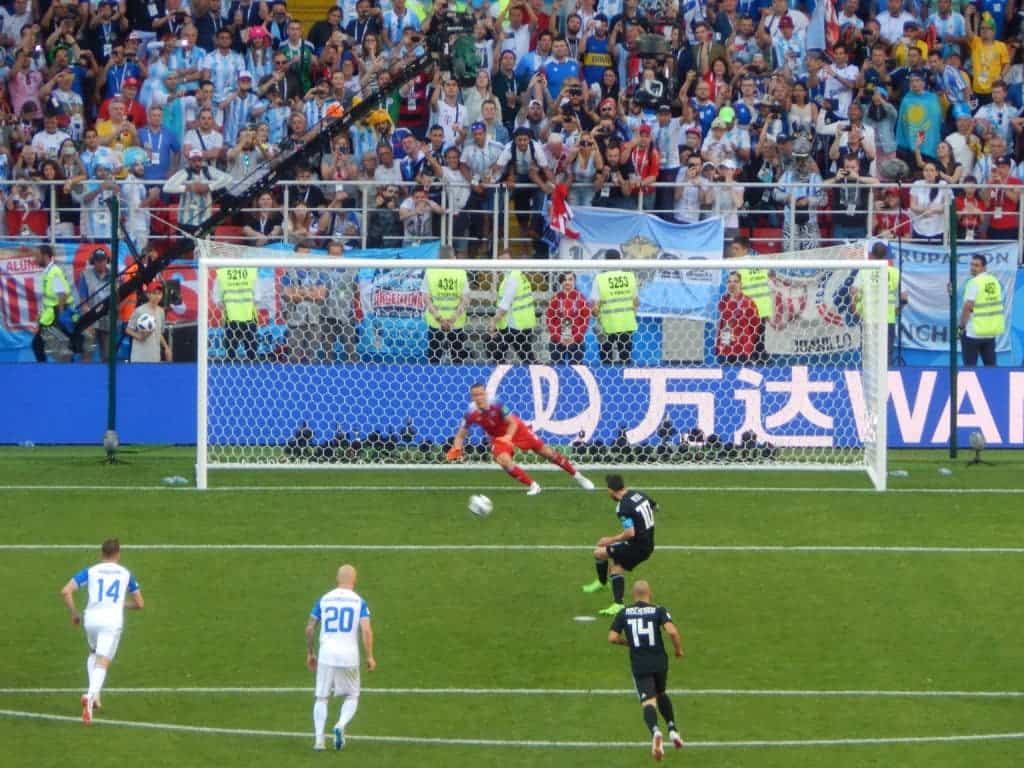Many a decisive game was decided by scoring — or missing — penalties. In theory, scoring from the penalty spot should be simple enough but things are not always so straightforward. Now, scientists present a new and improved way to practice penalty-taking.

Lionel Messi, universally regarded as one of the best players in modern football, shown here taking a penalty against Iceland. He didn’t score.
The white penalty spot has haunted many players, and will likely continue to do so, but the new study might make missing shots much rarer.
Generally speaking, there are two ways to take a penalty shot. Some players decide on where they want to put the ball beforehand — regardless of what the goalkeeper will do. The reasoning behind it is simple: if you hit the ball good enough, the odds are the goalkeeper won’t be able to save it anyway. This is called the goalkeeper-independent method.
But other players try to use more finesse: they keep an eye on the goalkeeper, anticipating and deciding where to hit the ball as they run towards it. The idea is that if the goalkeeper dives early, you can put the ball in the other direction — and if he (or she) dives late, then there’s already a smaller chance of saving the ball. In theory, this is the more effective method, but it’s also much more challenging.
There’s not much time to decide where you want to put the ball, and research has shown that if the goalkeeper dives late, this makes the striker’s attempt far less accurate. Since most penalties are taken in highly stressful situations, the decision-making process is not at all simple. Also, goalkeepers use diversion tactics too, which can add extra confusion.
With this in mind, a team of British researchers has come up with a training method that can improve accuracy and improve the decision-making process. They suggest that players should train using the implicit method — learning through independent decision-making, rather than coach-led sessions.
According to their routine, players should start off easy and then gradually increase the difficulty. For instance, by initially kicking from shorter distances and by using relatively large targets. Using this method, the cognitive load on the player is substantially reduced, allowing them to focus on the accuracy of the kick more.
Lead author of the study, Dr. Martina Navarro, a lecturer at the University of Portsmouth, said:
“A successful penalty kick requires that the penalty taker produces an accurate, well-controlled kicking action and at the same time watches the goalkeeper and makes a decision to which side to kick the ball. In other words, it is a defining feature of the goalkeeper-dependent strategy that a conscious decision is made while kicking. This makes the goalkeeper-dependent strategy essentially a dual task.”
“By practicing kicking skill and accuracy in an implicit manner will benefit penalty kick performance with a goalkeeper-dependent strategy compared to performance following an explicit intervention to improve kicking accuracy.”
In order to test this approach, researchers compared their approach to conventional methods, studying them with football players from the youth academies of VU University Amsterdam in the Netherlands and Red Bull Brasil in San Paulo, Brazil. Essentially, the players were split into two groups, and after a while, their performances were compared.
The study showed a similar decision-making efficiency for both groups, but the group practicing implicit training had higher overall accuracy. Researchers interpret this as a success — the cognitive load was eased without impairing the decision-making process, and this resulted in an overall improved control of the strike itself.
“When compared to explicit training, implicit training strategy results in higher kicking accuracy because it relies on an unconscious way of learning resulting in less cognitive demands while controlling the kick and therefore more attentional resources for deciding what side to kick.”
Although results are still preliminary and this is still a very small sample size, this is a promising find. Considering how important penalty kicks are in football, and how much importance (and money) is given to the sport, the matter will likely receive additional interest.
The study has been published in Human Movement Science









